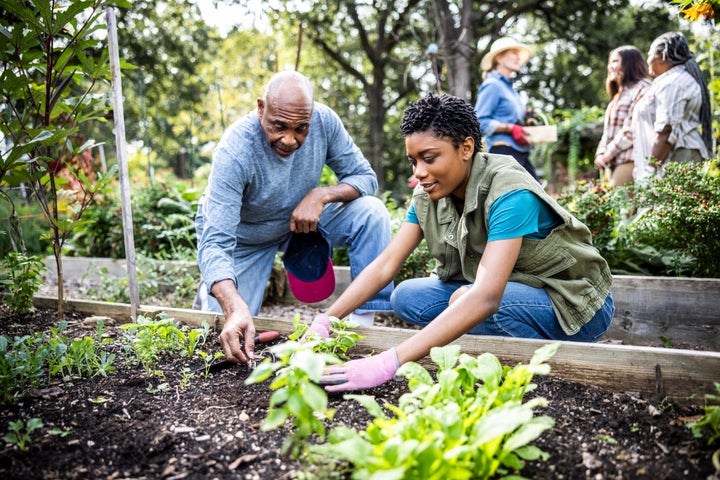
If you’ve ever hoped to get started with gardening but didn’t know where to start, no-dig gardening could be exactly what you’re looking for, and even better — it’s good for the environment.
This new approach to gardening is growing in popularity, according to Google Trends data and takes minimal effort compared to the tools and processes we’re familiar with when it comes to traditional gardening.
Personally, I’m in.
How to get started with no-dig gardening
According to the Royal Horticultural Society (RHS), no dig-gardening simplifies the planting process: “Vegetable beds and flower borders are simply prepared by covering the ground with organic matter, such as garden compost. Plants are grown directly into this layer of organic matter.”
This is thought to be better for the environment because when we dig soil, we destroy natural drainage channels that were created by worms. This then in turn disturbs fungal networks and releases carbon that’s locked in the soil.
Therefore, if we reduce our impact on the soil, we can preserve and improve soil structure and improve the overall health of our gardens.
Fortunately, getting started couldn’t be simpler and you can get started now, providing the soil isn’t waterlogged.
To get started, lay a double layer of cardboard on top of soil. This can be over a layer of grass or weeds but make sure that the weeds are cut right back. Overlap these sheets to prevent weeds from pushing through and be sure to use non-shiny cardboard with no staples or parcel tape attached.
Then, add around 10-15cm of organic matter on top of the cardboard. If you want to get started with planting straight away, wet the cardboard before adding the compost mix.
Then, you’re ready to get started with planting!
If you already have beds and want to start with those, you follow the same process but skip cardboard. Eventually, the roots will grow into the soil.
RHS said: “No-dig gardening works well with beds at ground level, since plants can root directly into the soil below (including soil that’s beneath paths). However, raised beds are still an advantage on heavier, poorly drained soils that are prone to waterlogging, as they drain better.”
BRB, raiding my recycling bin for cardboard.